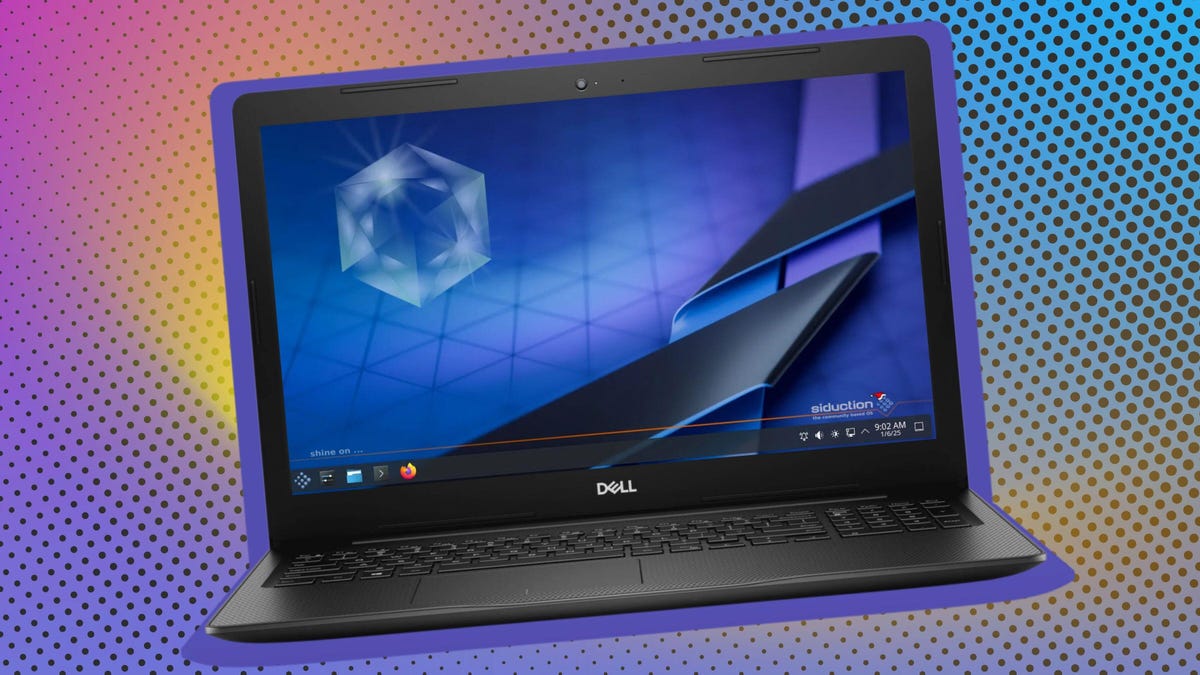

Many users are still on Windows 10, and they will soon face several options:
- Subscribe to Microsoft for ongoing updates ($61 for the first year, $122 for the second year, and $244 for the third year per device).
- Upgrade to Windows 11 (if hardware permits).
- Invest in a new computer compatible with Windows 11.
- Opt for an Apple device.
- Transition to Linux.
Among these choices, transitioning to Linux is the only free option.
If you’ve never used Linux before, this prospect might seem intimidating.
However, that doesn’t have to be the case.
Also: Explore the 4 Linux distributions similar to Windows for an easier transition
There are numerous Linux distributions designed to resemble the Windows experience. One such distribution is Siduction, a continuously updated release based on Debian Sid, featuring the KDE Plasma desktop environment.
The team behind Siduction has successfully created an operating system that will feel intuitive to Windows users. KDE Plasma provides a familiar interface that is exceptionally customizable, offering all the flexibility that this desktop environment is known for.
The comfort of familiarity is what makes Siduction inviting. It comes with a default Dark theme (which has gained popularity), but switching to a light theme is simple through Settings > Appearance & Style > Colors & Themes. Personally, changing to a light theme is one of the first tasks I undertake whenever I install a new OS, and it often feels essential.
Also: Discover why I no longer endorse this Linux distribution resembling Windows
Choosing between a light or dark theme is merely a matter of personal taste, and that’s one of KDE Plasma’s greatest strengths – it allows for a highly personalized desktop experience.
I prefer a light theme for my desktops.
Jack Wallen/ZDNET
But let’s shift our focus back to Siduction.
Overview of Siduction
The latest Siduction release takes artistic inspiration from Pink Floyd’s “Shine On.” Users can select from several desktop versions, including KDE Plasma 6.2.4.1, LXQt 2.1.0-1, Xfce 4.20, Xorg, and noX.
Also: Consider these 5 Linux distributions to revitalize your aging hardware
You may be thinking, “No way am I switching from Windows 10 to a rolling release!” Many associate rolling release distributions with instability. However, let me alleviate that concern. Rolling releases generally maintain stability; they simply eliminate the need for point releases. For example, if your selected distribution launches version 10, you’ll receive updates leading to versions 10.1, 10.2, and eventually 11. In contrast, a rolling release continuously updates from an initial version, eliminating the need for a full OS reinstallation.
This doesn’t imply instability. My experience with rolling distributions has revealed them to be reliable. In fact, their continuous update model often makes them more dependable than traditional release systems.
Typically, upon installing a new Linux distribution, I expect to conduct an upgrade after the first login. However, with a rolling release, this is a rarity. Upon installation of Siduction, I checked for updates and was pleasantly surprised to find it fully updated. Within days, several new app updates became available, which I promptly applied.
A notable aspect of rolling release distributions is their increased frequency of updates compared to standard releases.
Pre-installed Software Offerings
Siduction comes equipped with an extensive range of software, including LibreOffice (with Base), Firefox, KDE Connect, GIMP, Inkscape, IRC, KMail, and several media players like Dragon Player, Elisa, Kaffeine, and SMPlayer. This comprehensive pre-installed software list likely covers most users’ needs, unless there are specific applications you require.
However, I did encounter one drawback: KDE Discover lacks built-in Snap or Flatpak support, making apps like Slack and Spotify unavailable in the GUI app store. While installation via command line is possible, this could deter new users. Thankfully, there’s an easy solution.
Also: Here are 5 reasons I choose Opera Developer over the stable version
To enable Flatpak support, open KDE Discover, navigate to Settings, and select Add Flatpak Support. This will automatically incorporate the Flatpak central repository. If the option does not appear, you can add it via the terminal by becoming the root user (with su –) and executing the following command:
apt install kde-config-flatpak -y
Once complete, you should see the Flatpak option in Discover.
Enabling Flatpak support in KDE Discover is straightforward.
Jack Wallen/ZDNET
It would be preferable if the Siduction team included Flatpak support in KDE Discover from the outset, streamlining the experience for new users transitioning from Windows.
Is Siduction Right for You?
The ultimate question remains: is Siduction the right choice for you? I understand that many might hesitate to explore Linux, yet the reality is that adapting to new software is a skill most of us possess. Linux has evolved significantly over the past decade, with many distributions now offering user-friendly and stable environments. Siduction, particularly its KDE Plasma version, provides an experience that will make you feel at ease as if you’ve been using Linux for years.
Also: Learn how to create a bootable Linux USB drive
If you are facing the end of support for Windows 10, I encourage you to consider Siduction. While adopting a rolling release distribution may initially appear daunting, the benefits of having a consistently updated system without the need for reinstallation far outweigh the challenges of remaining on Windows 10 or incurring the costs of a new computer.
Should Siduction pique your interest, feel free to download the ISO and begin your journey immediately.









